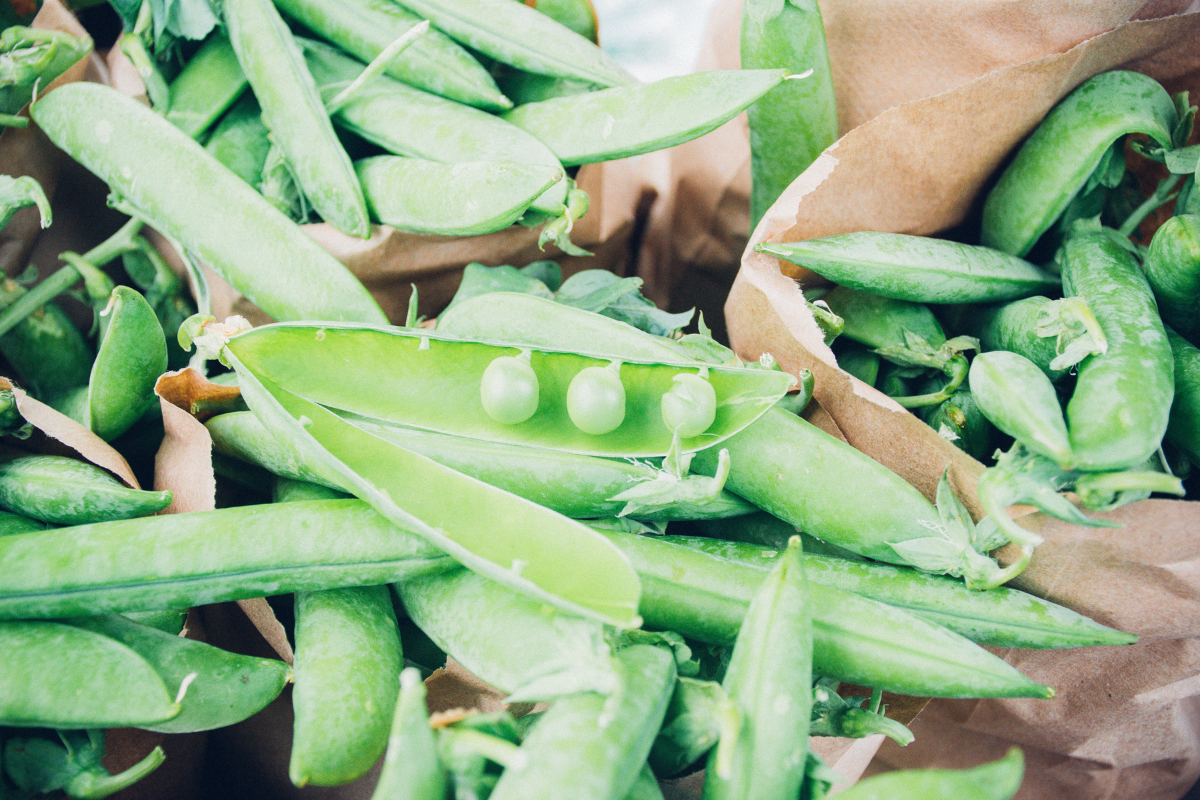By Scott Smith
Since 2014 when Friends of Animals first interviewed Ethan Brown, who in 2013 founded Beyond Meat, a vegan company that uses a variety of plant proteins including pea, brown rice, mung and fava beans, the popularity of the humble pea has soared.
Yellow pea is the fastest-growing source of protein for plant-based meat alternatives, a market that’s expected to be worth $18.4 billion globally by 2030, up from $4.2 billion in 2020, according to data from the World Animal Foundation.
Rich in vitamins and minerals and high in fiber, pea protein has a 94% rate of digestibility, which minimizes stomach issues such as bloating. Brown chose pea protein because he recognized some consumers were looking to avoid having additional soy in their diet—soy is often genetically modified, and it’s allergenic for some.
That peas are no longer seen as a heap of mush to be pushed to the side of your plate means more people are reaping their benefits.
A traditional home garden crop all over the world, peas (Pisum sativum) are actually a super food, whether you eat them raw as a snack, cooked fresh, frozen or dried as a vegetable. .
Let’s tally up all their nutritional benefits before we get to just how tasty peas can be in the delicious vegan recipe that follows.
What makes peas a super food
A half-cup serving of peas provides 34% of the recommended dietary intake of vitamin A, 24% of vitamin K, and 13% of vitamin C, with double-digit percentages of thiamine, folate and manganese as well as a healthy amount of iron. Peas contain no cholesterol, have a very low fat content and a lot of fiber—7 grams in that half-cup serving. Classified as a starchy vegetable like corn or squash, peas have more calories and carbohydrates than many veggies—62 calories and 11 carbs per serving—but make up for that in protein (4 grams per serving of cooked peas).
What’s more, nutritionists will tell you that green peas contain the carotenoids lutein and zeaxanthin, which help protect your eyes from chronic diseases, such as cataracts and age-related macular degeneration. They are also rich in coumestrol, a nutrient that plays a role in protecting against stomach cancer. According to webmd.com, a study done in Mexico City showed that daily intake of peas and other legumes lowered the risk of stomach cancer by 50%.
Way better than whey
For vegans, pea protein is the perfect alternative to whey protein, which is a milky byproduct left over from the cheesemaking process. The treatment of cows and calves used by the dairy industry is atrocious, of course, and as with all cattle production, environmentally ruinous.
Growing peas, on the other hand, has important environmental benefits. For one thing, they require less water than many crops. It takes nearly 200 gallons of water to produce one pound of soybeans, for example, while raising a pound of peas requires only 36 gallons.
More important, peas can actually help to improve soil structure and increase biodiversity. Peas are in the group of plants known as legumes, which produce pods with seeds or beans inside. Legumes have a symbiotic relationship with soil bacteria that allows their roots to “fix” nitrogen in the soil. Peas also require very little tillage or fertilizer, which has made field peas an important cover crop. Tests in western Nebraska have shown that planting field peas in rotation with wheat and corn crops increases soil microbial activity and soil water infiltration, and provides habitat for a greater number of beneficial microorganisms and insects.
Dozens of different types of field peas (which are actually more like beans) have been grown in Southern communities for generations and can still be found in farmers’ markets as heirloom varieties.
However you enjoy your peas—fresh sugar snaps, blanched snow peas or cooked from fresh, frozen or dried varieties—know you’re doing yourself and the planet good.
Enjoy this delicious recipe for Spaghetti Primavera, a delightful variation featuring both baby peas and snow peas, from Friends of Animals’ Dining with Friends cookbook.
Spaghetti Primavera
Ingredients:
1 pound spaghetti
7 tablespoons olive oil
1 1/2 cups broccoli, coarsely chopped
1 1/2 cups snow peas
1 cup sliced zucchini
1 cup baby peas
6 sliced asparagus
2 medium tomatoes, chopped
3 teaspoons minced garlic
1/4 cup parsley, chopped
1/4 cup pine nuts
10 mushrooms, sliced
1 cup non-dairy creamer
1/3 cup vegan butter
1/3 cup fresh basil, chopped
Sea salt
Ground pepper
1/2 cup veganParmesan cheese (optional)
Preparation:
Cook spaghetti al dente.
Blanch broccoli, snow peas, zucchini, baby peas and asparagus in boiling water for 3 to 4 minutes. Rinse in cold water and set aside.
In medium skillet, heat 1 tablespoon olive oil. Add tomatoes 1 teaspoon garlic, parsley, salt and pepper to taste. Sauté for 2 to 3 minutes. Set the skillet mix aside, keeping it warm.
Toast pine nuts in the oven for a couple of minutes until they are lightly browned. Place them in a larger skillet with the remaining olive oil, garlic, mushrooms, and blanched vegetables. Simmer for a few minutes. Add spaghetti, soy creamer, margarine and basil (and soy Parmesan if desired). Mix gently with a fork.
Top with sautéed tomatoes and serve immediately

